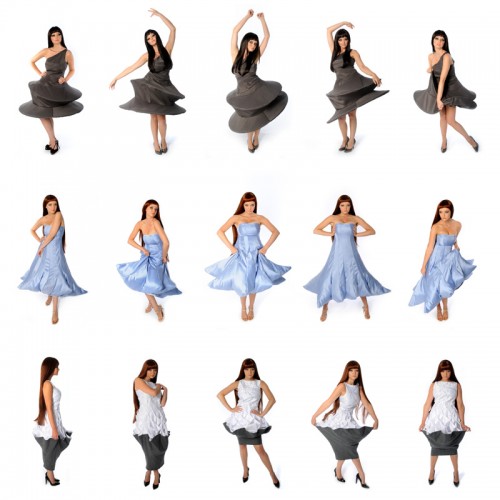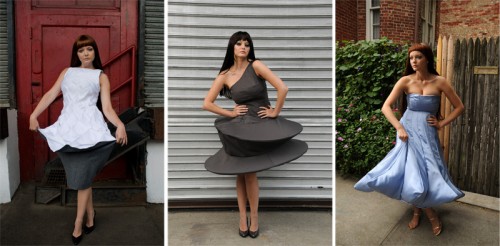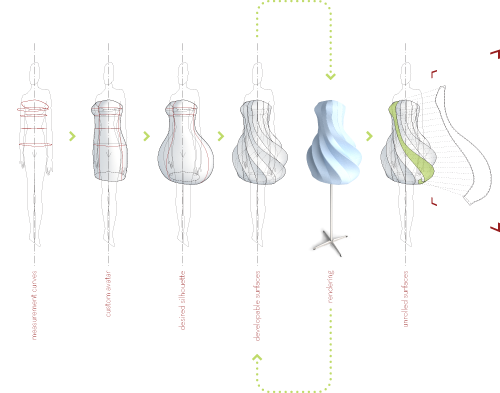Matter has been selected to present Periscope at the Input-Output Symposium. The symposium will be held at the Temple University Tyler School of Art on October 8 2010. In addition, both the Drawn Dress project and Periscope will be exhibited from October 6 - 16.
Drawn Dress Published in Pidgin 8
 Matter is proud to announce the Drawn Dress will be published in Issue 8 of Pidgin Magazine. Join us at the release party for champaign. Details below.
Matter is proud to announce the Drawn Dress will be published in Issue 8 of Pidgin Magazine. Join us at the release party for champaign. Details below.
Friday, March 26, 2010 Time: 7:00pm - 9:00pm Location: Center for Architecture Street: 536 LaGuardia Place City/Town: New York, NY
Princeton University | Drawn Dress
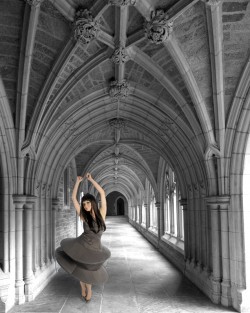 Brandon Clifford has been invited to present the 'Drawn Dress' at this years Princeton Research Symposium on Saturday December 5th. The PRS2009 is open to the public and registration is free.
Brandon Clifford has been invited to present the 'Drawn Dress' at this years Princeton Research Symposium on Saturday December 5th. The PRS2009 is open to the public and registration is free.
Drawn Dress: Press Release
We are proud to announce the release of the 'Drawn Dress' project. To learn more and see the entire project, please go to the Drawn Dress Page.
Dress Sneak Peak
Here is a sneak preview of the process in the Drawn Dress series. Starting with a 3d body scan and moving through the robotic fabrication, our model Victoria Lee proves that not only the drawing of the dress is variable, but the reality is as well. More drawings, images, and animations of the Drawn Dress project to come.
Robotic FABRICation
To accompany the digital body scan, we decided to go all 'digital' for phase 2 of the 'Drawn Dress' project. Here is an animation for your enjoyment of Wes and his Robot cutting the custom dress geometries.
Corpus Digital
![]() We have been fortunate enough to have our model digitally scaned and digitized into an avatar by the very generous people at [TC]2. This is proving to be invaluble to the drawing process. Analagous to direct draping, we are able to draw directly on our 'model' and generate custom garments.
We have been fortunate enough to have our model digitally scaned and digitized into an avatar by the very generous people at [TC]2. This is proving to be invaluble to the drawing process. Analagous to direct draping, we are able to draw directly on our 'model' and generate custom garments.
Materialogic
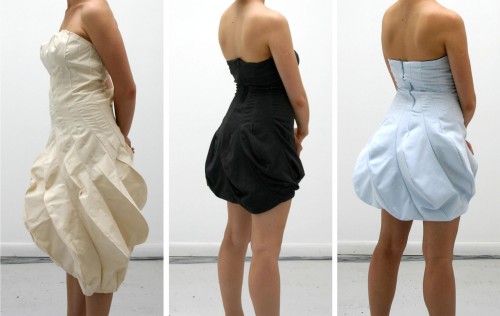 Considered to be our proof of concept, these three dresses were all designed digitally. While the design varies only slightly, the material impact is enormous. From left to right - muslin, stretch jersey knit cotton, and non-stretch cotton. While none of these materials are recommended for this design, they will serve as a comparative base for 'the collaboration' to come.
Considered to be our proof of concept, these three dresses were all designed digitally. While the design varies only slightly, the material impact is enormous. From left to right - muslin, stretch jersey knit cotton, and non-stretch cotton. While none of these materials are recommended for this design, they will serve as a comparative base for 'the collaboration' to come.
The Digital Process
Drawn Dress: fashioning digital fabrication
For the architect, the digital era has transformed the process of design and fabrication, fueling the fire of rebellion against the standardized construction unit. Today, the architect dreams of efficient transformations, parametric constraints, and developable surfaces… borrowing, oftentimes recklessly, sartorial techniques and language from the fashion industry – darting, draping, patterning. Why then do architect’s contemporaries in fashion design still surround themselves with dress forms and work tables? There is a clear disconnect between the methods of working and the moments of progress within the respective fields. The fashion industry still split between made to measure couture and the prêt-a porter S-M-L-XL and numerically coded standardized sizes. This architectural reference is ironically better suited for the mass customization boom. Susan Ashdown’s research at Cornel University into 3D body scanning has demonstrated that our conventional understanding of standard sizing for garments is antiquated[1]. When viewed in comparison, the architecture field and the fashion industry have become uniquely successful at processes the alternate field struggles to get right. This synergy is seemingly apparent and useful; however, little interaction occurs at the pedagogical level beyond superficial discussions and conceptual leaps. As Architects take this opportunity to reflect on how the digital process has affected their practice, we have the oportunity to engage a similar process that has yet to take the digital leap.
Charged with the task of designing, developing, and constructing a digitally drawn dress, this comparative process serves as a catalyst to rarify architectures contribution in the digital era. By selecting the “strapless dress” typology we are able to engage two opposing forces at once -- fit and volume. A set of five measurements are first drawn from the client and translated into digital curves. These curves generate the surface of the body, defining the irreducible measurements required for the dress to function. While these steps could be considered automated with a digital body scanner, the act of taking key measurements, either from a digital scan or a physical person, has proved to be an important engagement with the history of garment fabrication. This next step, while digital, is anything but automated. Provided with the avatar, the designer models a silhouette surface and constructs a system, decomposing the compounded surface into developable surfaces by extracting the seam locations. In this digital world, seams need not fall in conventional locations or trace the dress form. These darts, seams, and folds are capable of manifesting any design as long as the geometric principles at play are in tact. When these surfaces unroll into their 2d profiles they maintain their potential energy to re-manifest themselves in the 3d physical form once sewn back in place. As opposed to simply triangulating a body scan, this process embraces a reciprocity between drawing and construction and by doing so pushes processes beyond the sequences found in the divided fields of architecture and fashion.
[1] Susan Ashdown, Ready-to-Wear, http://bodyscan.human.cornell.edu/scenefa6b.html (April 2009)

